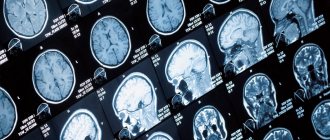The costs of the modern pace of life and current events are endless lack of sleep, frequent outbursts of aggression and irritability, fatigue and apathy. However, living in the ringing silence of Tibet or a dense forest is not at all a way to avoid the negative factors that accompany our everyday life. It is quite possible to learn to manage your bad mood. Moreover, pharmacology willingly helps with this with a wide variety of means.
Today we are talking about Afobazole, a popular drug for stress and anxiety. When can it be used, what is it good for and what effect to expect.
Medicine Afobazol
It has been on the Russian market of anti-anxiety and sedatives since 2000. The drug was developed at the Research Institute of Pharmacology of the Russian Academy of Medical Sciences, as a result of the search for selectively acting anxiolytics that would be devoid of side effects characteristic of the main group of anti-anxiety drugs. During this time, the drug was noted by consumers as effective in relieving anxiety and stress, and as a drug with the fewest side effects.
Composition of Afobazole
Afobazole is “in the middle”, between simple sedatives (dietary supplements) and serious psychotropic drugs. The drug is over-the-counter, but should be taken as prescribed by a specialist.
The main active ingredient of afobazole, fabomotizole, is a mild and delicate antidepressant (anxiolytic substance), which, acting on certain types of receptors in the brain, restores their sensitivity to inhibitory mediators. That is, it helps to achieve a balance between the processes of excitation and inhibition, normalizing the mental state.
Increases the bioenergetic potential of neurons in general, has a neuroprotective effect: restores and protects nerve cells. The drug is metabolized in the liver and is quickly transferred from the general bloodstream to peripheral areas. The effect of the drug is achieved after 5-7 days of use. A stable result is observed after a month of use and persists for 10-14 days after discontinuation of the drug.
Release form and dosage
Afobazole is available only in tablet form. 1 tablet contains 10 mg of active ingredient. The number of tablets per package is 60 pcs. Among the excipients in afobazole tablets are: potato starch; microcrystalline cellulose; lactose. So, people with lactose intolerance, and any components of the composition, should take afobazole with caution, or consider another drug.
Indications for Afobazole
Taking the drug immediately has a double effect on the body:
- Firstly, it eliminates anxiety or reduces its manifestations - fears, worries and nervousness, bad premonitions and fears about future events and the present, even if there are no visible reasons for anxiety.
- Secondly, it has a mild activating, stimulating effect. The drug helps to balance the mental state, cope with irritability, nervous tension, helps to relax and normalize sleep, reduces nervousness and tearfulness, including during premenstrual syndrome in women. Reduces symptoms of depression and stabilizes mood.
Afobazole is indicated for the treatment of frequent manifestations of anxiety companions: muscle spasms, cardiovascular, respiratory and gastrointestinal. The drug is especially indicated for persons with persistent manifestations of psychosomatics: bronchial asthma, irritable bowel syndrome, systemic lupus erythematosus, hypertension and arrhythmia.
Afobazole eliminates disorders of the autonomic system: dry mouth, sweating, dizziness. Copes with cognitive disorders, which are almost constant companions of mental and stress disorders: inability to concentrate when solving even simple problems, weakened memory. It can be prescribed to asthenics with personality traits such as anxious suspiciousness, uncertainty, increased vulnerability and emotional instability, as well as to persons prone to emotional stress reactions.
Helps to survive difficult situations, stressful periods, and periods of adaptation to new living conditions with comfort and minimal emotional and mental losses.
Also provides mental health support during treatment: sleep disorders of various origins, premenstrual syndrome in women; hangover; to alleviate the “withdrawal” syndrome when quitting smoking. Afobazole does not cause muscle weakness and drowsiness, does not reduce memory and concentration, and therefore does not have a negative effect on driving. While taking the drug, addiction does not develop, and there is no withdrawal syndrome, which often occurs when taking other types of antidepressants with the development of dependence.
Afobazole treatment regimens
The optimal single dose is 10 mg. The daily dose of the drug is 30 mg (3 doses of 10 mg each). Take the tablets with water. Depending on the severity of symptoms and indications, the course of the drug ranges from 2 to 4 weeks, but after consultation with a specialist, therapy can be extended to 3 months with an increase in the daily dose to 60 mg.
Contraindications
- Individual intolerance and hypersensitivity to the composition;
- galactose intolerance, lactase deficiency or glucose-galactose malabsorption;
- During pregnancy and breastfeeding;
- children and adolescents under 18 years of age.
Special recommendations for Afobazole
Despite the fact that Afobazole is maximally free of side effects and does not cause drowsiness or addiction, its use should be taken as seriously as possible, weighing the potential benefits and harms. The drug can be taken when performing potentially hazardous activities that require increased concentration and speed of psychomotor reactions.
Afobazole and alcohol
Alcohol is in principle incompatible with the concept of “treatment”. The drug does not interact with ethanol, but despite this, any therapy should be separated from alcohol intake due to the increased load on the liver and gastrointestinal tract. Afobazole can be used during a hangover period, as an aid in getting out of a drunken state. It is very important not to interrupt treatment at this moment, even if relief has occurred.
Afobazole for children
Afobazole is not used in children, because the full formation of the nervous system in children has not yet been completed, and in adolescents it is destabilized due to entering adolescence and hormonal changes. If corrective medications are required during this period, it is best not to consider afobazole as suitable. To select anti-anxiety and sedatives for children and adolescents, it is best to consult a specialist.
Afobazole during pregnancy
The drug has a high ability to penetrate the placenta and breast milk. So it is strictly prohibited for use during pregnancy and lactation due to the possibility of harming the developing fetus.
Afobazole for heart disease
The drug will have a positive effect on cardiovascular pathologies only if the latter are the result of mental disorders and arise against the background of stress and depressive states. If you have confirmed cardiovascular diagnoses, it is best to consult with a specialist and compare the harm and benefit of taking the drug.
Afobazole and smoking
Nicotine does not reduce the effect of taking the drug. But at the same time it helps to get rid of the nervous consequences of quitting smoking, acting on neurons and the nervous system in an inhibitory way. Quitting smoking is a stress for heavy smokers, which Afobazol is designed to cope with.
It is important to remember that no medicine can be taken constantly, relying on it to survive stressful situations.
Monitor your mental state regularly, then the participation of medications in your life will be minimal! Take care of yourself and be healthy!
PsyAndNeuro.ru
Depression and anxiety disorders are quite common in women during pregnancy. According to statistics, in the United States, 8% - 6% of women received antidepressant medications. Treatment of depression and anxiety disorders during pregnancy and the postpartum period is a rather complex but important process, since with the right approach it will have a positive impact on the woman and child, as well as on the formation of parent-child relationships.
However, taking antidepressants in early pregnancy can have a negative impact on the baby's health. Some antidepressants have been associated with congenital heart defects and other fetal defects. But most studies have only examined the effects of drugs from the group of selective serotonin reuptake inhibitors (SSRIs). There are critically few studies on serotonin norepinephrine reuptake inhibitors (SNRIs) and bupropion. At the same time, it is difficult to trace whether congenital malformations (CDM) are caused only by taking antidepressants in the early period of pregnancy or whether there is an influence of other factors.
In December 2021, a study by Kayla N. Anderson et al was published in JAMA Psychiatry. Using the National Birth Defects Prevention Study (NBDPS) database, the authors studied the association of congenital birth defects with antidepressant use, excluding, if possible, the influence of environmental factors. They selected children with congenital malformations not associated with genetic or chromosomal disorders. The control group consisted of children born in the same area and in the same month as the corresponding respondents from the main group. Between 6 and 24 months postpartum, mothers were asked whether they had taken fluoxetine, paroxetine, citalopram, venlafaxine, or bupropion (other antidepressants reported to mothers previously before entering the information into the NBDPS) during or at least during pregnancy. 3 months before it. During the conversation, the dose and frequency of taking the medications were clarified.
In early pregnancy, 1562 (5.1%) women from the main group and 467 (4.1%) women from the control group received antidepressant therapy. In the control group, sertraline, fluoxetine, paroxetine, citalopram, escitalopram, venlafaxine, and bupropion were more often used. Women in the control group who took antidepressants, compared with women in the same group who did not take antidepressants, were older, had better education, were more likely to report smoking or drinking alcohol in early pregnancy, and had already had at least one child. When comparing them with women from the control group who received antidepressants outside the early period of pregnancy, a difference was found only in the level of education.
When comparing women who took antidepressants in early pregnancy with women without treatment, an increase in the OR was found between taking paroxetine, fluoxetine, venlafaxine, bupropion and VPR. Escitalopram did not show such an association.
The incidence of certain types of congenital malformations was then examined by comparing it in children of mothers who took antidepressants in early pregnancy and in mothers who were on therapy outside this period.
The influence of external factors on them was checked. The authors found that taking fluoxetine correlates with coarctation of the aorta, esophageal atresia, cytolapram with atrioventricular septal disorders, diaphragmatic hernia, sertraline with diaphragmatic hernia, paroxetine with anencephaly, craniorachischisis, gastroschisis, and bupropion with diaphragmatic hernia. Escitalopram had virtually no effect on the occurrence of congenital malformations, while venlafaxine, on the contrary, correlated with many of them.
Previously, data on the connection between congenital heart defects and antidepressants were obtained without taking into account the influence of the mother’s underlying disease; the authors of the new study suggest that the association between these diseases and drugs may not be so clear due to the influence of the mother’s condition and the conditions in which she lives on the fetus .
Among non-SSRI antidepressants, venlafaxine demonstrated the highest incidence of increased risk of noncardiac congenital malformations. Previous studies showed conflicting results: some of them confirmed the association of venlafaxine with many congenital malformations, and some, on the contrary, did not find a connection between this drug and disorders of fetal formation.
A new study taking into account the mother's condition found that bupropion was associated only with diaphragmatic hernia. Previous studies, as in the case of venlafaxine, showed opposite results: some found no connection between the drug and any congenital defects, while others found a correlation with congenital heart defects.
The new study had limitations. First, the NBDPS database was not intended to accurately identify diagnoses for which antidepressant medications were prescribed. Consequently, it was not possible to establish the absence of influence of the mother's condition with maximum accuracy. Secondly, the prescription of drugs was not randomized, and the authors could not trace what determined the choice of drug, the decrease or increase in its dosage, the duration of treatment, the need to continue taking it during pregnancy: the severity of the mother’s condition or the risk of relapse.
Thus, treating depression and anxiety disorders during pregnancy is challenging. The new study highlights the importance of identifying the safest first-line treatment options for this patient population. Currently, it is necessary to carefully weigh the risks and benefits of taking antidepressants in the treatment of anxiety and depressive disorders in pregnant women.
Author: Wirth K.O.
Source: Kayla N. Anderson, Jennifer N. Lind, Regina M. Simeone, William V. Bobo, Allen A. Mitchell, Tiffany Riehle-Colarusso, Kara N. Polen, Jennita Reefhuis. Maternal Use of Specific Antidepressant Medications During Early Pregnancy and the Risk of Selected Birth Defects. JAMA Psychiatry.
Typical mistakes that prevent pregnancy
Having decided to conceive a child, the couple begins trying to achieve pregnancy. But it is not enough to know on what day of the menstrual cycle unprotected sexual intercourse should take place.
The likelihood of conception is influenced by many factors. If you don't get pregnant, you may be doing something wrong.
Let's look at typical mistakes that couples can make when planning a pregnancy.
Make an appointment
Low calorie diet
The body perceives a lack of calories as an existential threat. There is not enough energy and plastic material for the production of hormones, the normal functioning of the genital organs and the maturation of germ cells.
A prolonged calorie deficit is the easiest path to anovulation (lack of ovulation) and the inability to conceive a child.
In men, the normal process of spermatogenesis is disrupted. The amount of ejaculate and the normal forms of sperm contained in it decreases.
Therefore, instead of diets with a calorie deficit, it is worth creating a complete diet, the calorie content of which covers the energy requirement. It is worth remembering that it must contain proteins, fats and carbohydrates in sufficient quantities.
Vegetarianism
The basis of the structure of the body is protein. It is best absorbed from meat and meat products. In addition, the body receives the greatest amount of iron from food of animal origin.
Vegetarianism, although considered one of the healthy eating options, may not always meet the body’s need for protein. Plant protein has an inferior amino acid composition.
Therefore, if pregnancy does not occur, the reasons for this may lie in vegetarianism. When planning a family, you should temporarily abandon this diet. The same should be done during pregnancy if you do not want to harm your baby.
Sauna
The sauna improves blood circulation, which is very useful for any person, but not for the future father. After all, the male gonads that produce gametes are located outside the body for a reason.
Sperm are very sensitive to high temperatures, so nature has made sure that the testicles of men are exposed to temperature conditions no higher than 34 degrees.
If your wife does not become pregnant, you can increase your chances of conceiving by foregoing this pleasant health procedure while planning your pregnancy. After receiving the long-awaited result, he will be able to reward himself with a trip to the sauna, and it will be even more enjoyable after a long break.
Shower after intimacy
You conscientiously calculated the most favorable day for conception. We did everything to ensure that this time the pregnancy test was positive. But it turned out to be negative again. What is the reason?
One of the common mistakes is to immediately take a shower or bath after making love. Wait at least two hours, or better yet, even longer, for the male reproductive cells to arrive at their destination. They can be “helped” if immediately after contact the woman takes a position in which the pelvis is slightly raised. To do this, you can place a cushion under the buttocks.
Incorrect frequency of sexual intercourse
The maturation of both male and female germ cells requires a certain time. Everyone knows that it takes about 14 days for an egg to mature.
But only a few know that spermatozoa, which previously undergo the stages of spermatogenesis, “overgrow” with flagella and an acrosome in the lumen of the seminiferous tubule for another 3-4 days.
These organelles are very important in fertilization: the flagellum determines the motility of sperm and their ability to reach the oocyte. The acrosome contains an enzyme that dissolves the protective shell of the egg, due to which fertilization occurs.
When planning a pregnancy, take a break between episodes of intimacy. 3-4 days is quite enough - at longer intervals, stagnation and thickening of sperm occur, which negatively affects the viability and fertility of sperm.
If contact is too frequent (for example, daily), there may not be enough sperm or it will be too thin. Which also greatly reduces the chance of conception.
It is also important to take into account the days of the menstrual cycle that are most favorable for conception. Most often this is around the 10th to 16th days of the cycle.
Fruitless attempts for over a year
It’s not so scary if the couple who cannot conceive on their own for a year is young. But often problems with conception lie in wait for spouses who are of advanced reproductive age. And here it is important not to waste precious time.
With infertility, there is always a specific reason why conception is impossible. By postponing the search for this reason, spouses only aggravate the current situation.
If pregnancy does not occur for a year, in the future the chances of conceiving a child without the help of doctors do not exceed 10-15%. Therefore, it is better to contact a reproduction center, get tested, identify the cause of infertility and, if possible, eliminate it. Only after this will you be able to get pregnant.










